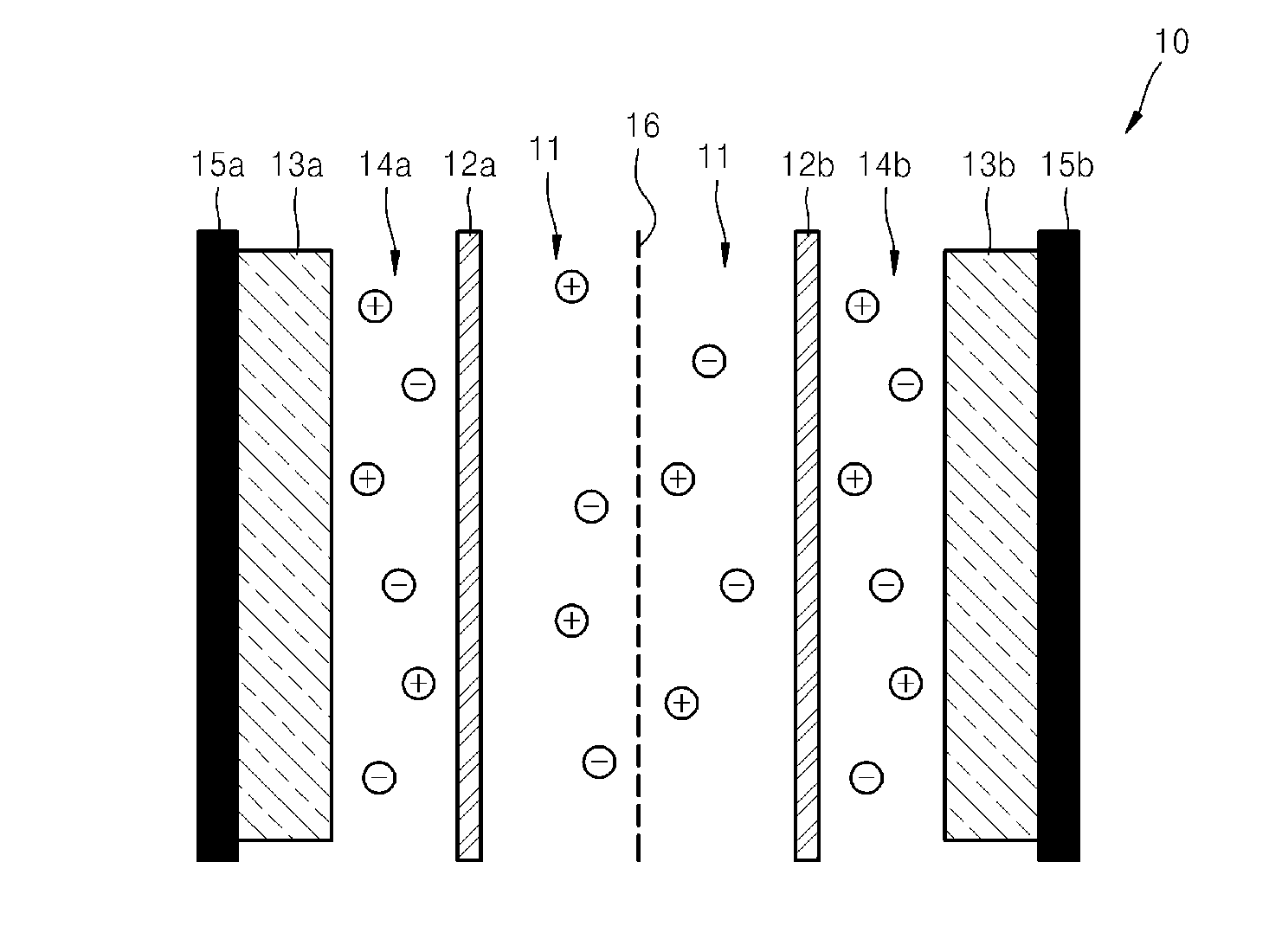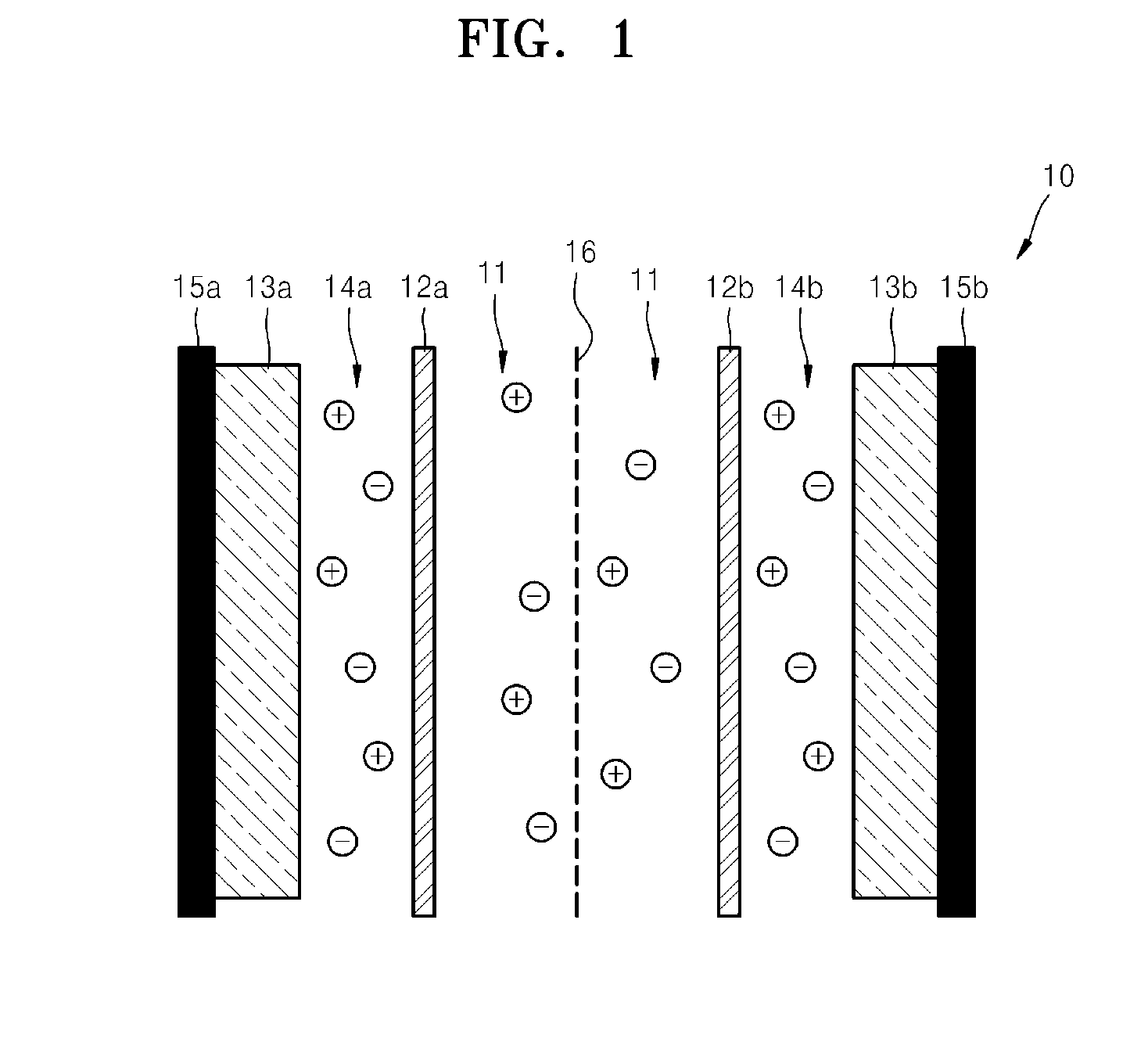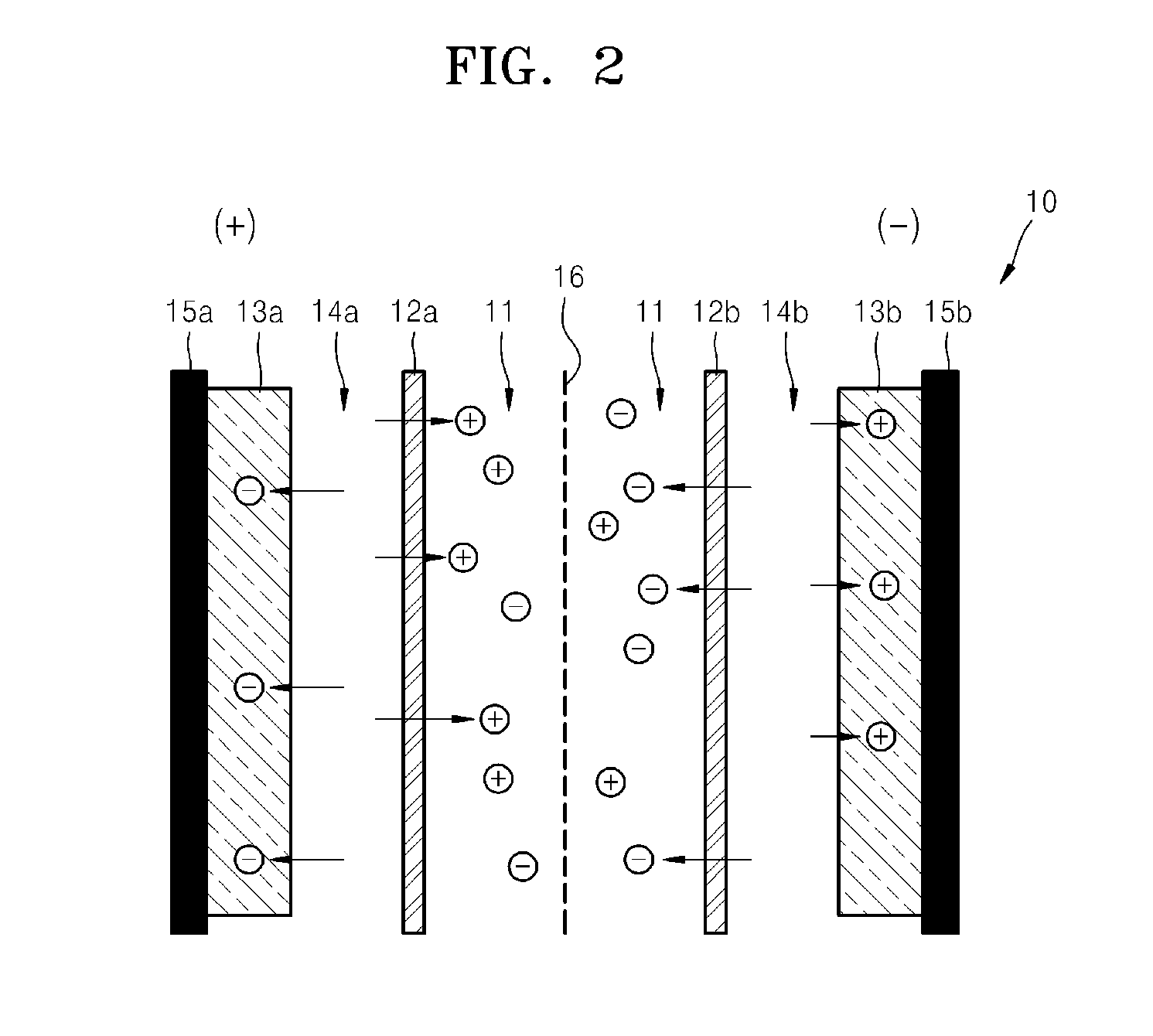Capacitive deionization device
a deionization device and capacitive technology, applied in the direction of electrolysis components, chemistry apparatus and processes, filtration, etc., can solve the problems of environmental damage, unsuitable hard water for washing, and significant reduction of the energy efficiency of the devi
- Summary
- Abstract
- Description
- Claims
- Application Information
AI Technical Summary
Benefits of technology
Problems solved by technology
Method used
Image
Examples
example 1
Manufacture of Electrode and Cell
1) Manufacture of Electrode
[0105]In this example, 40 g of activated carbon (having a specific surface area of 1300 m2 / g), 10 g of carbon black, and 4.17 g of an aqueous suspension of 60% by weight of PTFE, 130 g of propylene glycol, and 100 g of NH4HCO3 were put into a stirring vessel, kneaded, and then pressed to manufacture a porous electrode. The porous electrode was dried in an oven at 80° C. for 2 hours, at 120° C. for 1 hour, and at 200° C. for 1 hour to complete the manufacture of the porous electrode.
2) Manufacture of Cell
[0106]First, the porous electrode, which was dried as described above, was cut into 2 pieces, each having an area of 10 cm×10 cm (100 cm2), and a weight of each electrode was measured. Each of the porous electrodes had a weight of 5.9 g.
[0107]Second, the two electrodes were immersed in an electrolyte solution of 0.5M KCl aqueous solution in a vacuum.
[0108]Third, a cell was manufactured by sequentially stacking a current coll...
example 2
[0111]Electrodes and a cell were manufactured in the same manner as in Example 1, except that a 1 M KCl aqueous solution, instead of the 0.5 M KCl aqueous solution, was used as the electrolyte solution.
example 3
[0112]Electrodes and a cell were manufactured in the same manner as in Example 1, except that a 4 M KCl aqueous solution, instead of 0.5 M KCl aqueous solution, was used as the electrolyte solution.
PUM
| Property | Measurement | Unit |
|---|---|---|
| Time | aaaaa | aaaaa |
| Electrical conductivity | aaaaa | aaaaa |
| Electrical conductivity | aaaaa | aaaaa |
Abstract
Description
Claims
Application Information
 Login to View More
Login to View More - R&D
- Intellectual Property
- Life Sciences
- Materials
- Tech Scout
- Unparalleled Data Quality
- Higher Quality Content
- 60% Fewer Hallucinations
Browse by: Latest US Patents, China's latest patents, Technical Efficacy Thesaurus, Application Domain, Technology Topic, Popular Technical Reports.
© 2025 PatSnap. All rights reserved.Legal|Privacy policy|Modern Slavery Act Transparency Statement|Sitemap|About US| Contact US: help@patsnap.com



